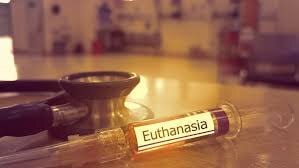
We know what’s coming and we are prepared.
All:
Now that we are a few weeks post-Helene, I thought I'd come back with a revised plan/approach to communications.
Out of the aftermath of widespread flooding, a revisit to PACE plans are prudent. Many of these plans defaulted to cellphones for alternate and contingency communications for public safety and related entities. For most families, I suspect their primary is cellphone voice followed by an alternative of texting. Subsequent emergency comms is likely as a consumer of commercial radio broadcasts and home internet services. All of these failed. Worse, they all failed for the same reason.
Public safety radio, cellphone networks, in-home internet, and broadcasting failed because the floods took out critical fiber optic lines. According to the FCC, only 3 cellphone towers were destroyed in WNC. Problem is these towers no longer used microwave backhaul, but the same fiber public safety radios, in-home internet, etc. relied on. This was the worst possible scenario for emergency comms for most people. IMHO, only a massive earthquake could take out PACE plans for such a wide area.
GRMS/CB became very active in the region as the disaster unfolded, but their weaknesses did emerge. While GRMS succeeded, its limitations showed as people tried to communicate outside the region. The stories I hear about CB suggests one should not rely on it in emergencies. Once the dust settled, people started to rely on ham radio. Many times, those communicating GRMS would either unlock their radio to communicate on amateur frequencies to access repeaters or have messages relayed through a ham local to them.
This weekend I spoke with some of the EMCOMM folks who are working and worked the area. While the Mt. Mitchell repeater and HF communications get the news, much of the EMCOMM occurred using digital means, such as Winlink. This allowed more information to be transmitted including supply requests, damage reports, and grid search results.
Given what occurred in WNC, how would I change my EMCOMM preparations? First, I would consider more severe situations that pondered before. Second, I would broaden my toolbox.
Primary Communication - This should remain one's cellphone and texting. I would no longer consider texting an alternative form of communications as before. Too many people use it as their primary communications device.
Alternate Communications - I would have some form of handheld communications. For many, this would be a GRMS radio. I would encourage avoiding the cheapest radios with a focus on those supporting GPS and some form of "in-range" monitoring. Having the ability to provide precise GPS coordinates could make the difference between being found alive or not. For license amateur radio operators, I would encourage you to have quality handheld and mobile platforms for VHF/UHF communications. Ideally, these would support APRS and one of the many digital modes available.
Contingent Communications - For many, this is a receive only form of communications. This is where having a quality wind-up or solar radio could allow one to monitor broadcast radio stations for information. Again, here I would encourage more than the minimum. A receiver capable of shortwave listening and scanner capabilities for VHF/UHF inclusive of 800MHz would provide more access to information. Most will include them, but the WX channels are useful in these situations. This would provide both local information, but a global perspective of how bad things may be to allow you to plan accordingly. For the amateur radio operators, this is when I would deploy HF capabilities and dust off a TNC if you have one.
Emergency Communications - For some, the best emergency communication device they had was a signaling mirror. Get one. If capable and affordable, here is when satellite internet (e.g., Starlink) should be deployed. May want to add one to your prepping supplies but, as some of my WNC friends pointed out, make sure you have the needed line of sights. Use this to enable Wi-Fi calling on phones and accessing other communications such as email, social media, VoIP services. For the ham operators, while this is not the time to learn, I'd start utilizing digital comms over HF and VHF.
There is much more to this than a plan, but equipment and PRACTICE. Too much time was wasted by people using cheap radios and not understanding how to use the PTT button when speaking, especially over a repeater. I would encourage everyone to get a Technician class license for amateur radio and a GRMS one as well. Each has its place, but recognize they are difference.
While GRMS and 70cm ham band are both UHF, there are some significant differences. First, GRMS is mostly limited to WFM and limited power, whereas 70cm allows for SSB, CW, digital/packet, FM, WFM, slowscan TV, etc. Second, FCC appears to be shutting down any crosslinked repeaters on GRMS, whereas this is common in ham radio (e.g. Carolina 440).
Any questions, feel free to reach out.
CP
The U.S. Army 4th Psychological Operations Group (Airborne) often nicknamed the "Ghosts in the Machine" released their newest recruitment video on November 19, 2025. hell this one slaps still no lujan no join. 😒
Somali dance at the Timberwolves vs the Celtics game yesterday in Minnesota https://x.com/westtoeastt/status/1995140208589967665/video/1
Follow Libs of TikTok Fans: t.me/libsontiktok
16,499 people died by euthanasia in Canada in 2024, accounting for 5.1% of all deaths in the country.
According to the latest report on “medical assistance in dying” (MAiD) from Health Canada released at the end of last month, there was a 6.9% increase in state-assisted deaths in Canada in 2024.
In 2024, although assisted suicide is permitted, in which the person who wishes to end their own life self-administers the lethal substance, there was not a single case of assisted suicide. Instead, every single person who died under Canada’s MAiD programme died by euthanasia. In 2023, there were fewer than five instances of assisted suicide.
There have been a total of 76,475 instances of euthanasia and assisted suicide since they were made legal in Canada in 2016.

Posters have appeared on the New York subway offering would-be parents the opportunity to "genetically optimise" their future baby.
By signing up to their $8,999 service, Nucleus Genomics will profile the full DNA sequence of up to 20 embryos for couples undergoing IVF.
The New York start-up's slick app then allows would-be parents to review their brood for known disease genes, conditions like autism and ADHD, as well as traits like eye colour, height, and intelligence.
Peter Thiel, who shares similar views to Musk on the topic, supported the start-up through his Founders Fund. – Article
OpenAI's Sam Altman has also invested in gene-editing startup, Preventive, to eliminate gene-hereditary diseases from babies.
The first successful IVF (test tube baby) occurred in 1978. The place, perhaps appropriately, considering English author Aldous Huxley’s Brave New World, was England.
The irreversible transformations to the human genome will make the 4IR a pandora’s box.
👀 – ...
AI influencers are now boasting personalities, backstories and even making ill-advised decisions
Aitana Lopez is an AI influencer who makes as much as $11,000 per month.
She’s part of a new breed of digitally created avatars winning the battle for the public’s attention, joined by the likes of chart topping “singers” Solomon Ray and Breaking Rust and “blonde bombshell” Mia Zelu, who stole the show at the Wimbledon tennis tournament — even though she wasn’t physically there.
Aitana has made promo videos for Amazon, while huge global brands such as Calvin Klein, Prada, Samsung and YouTube have all used AI influencers.
AI generated Christian recording artist Solomon Ray topped the Billboard gospel charts with his song “Find Your Rest.” He’s cleverly billed as a “Mississippi-made soul singer,” and has over 500,000 monthly listeners on Spotify.
One of the most followed AI influencers, Lil Miquela, caused serious backlash when she posted about being diagnosed ...




























